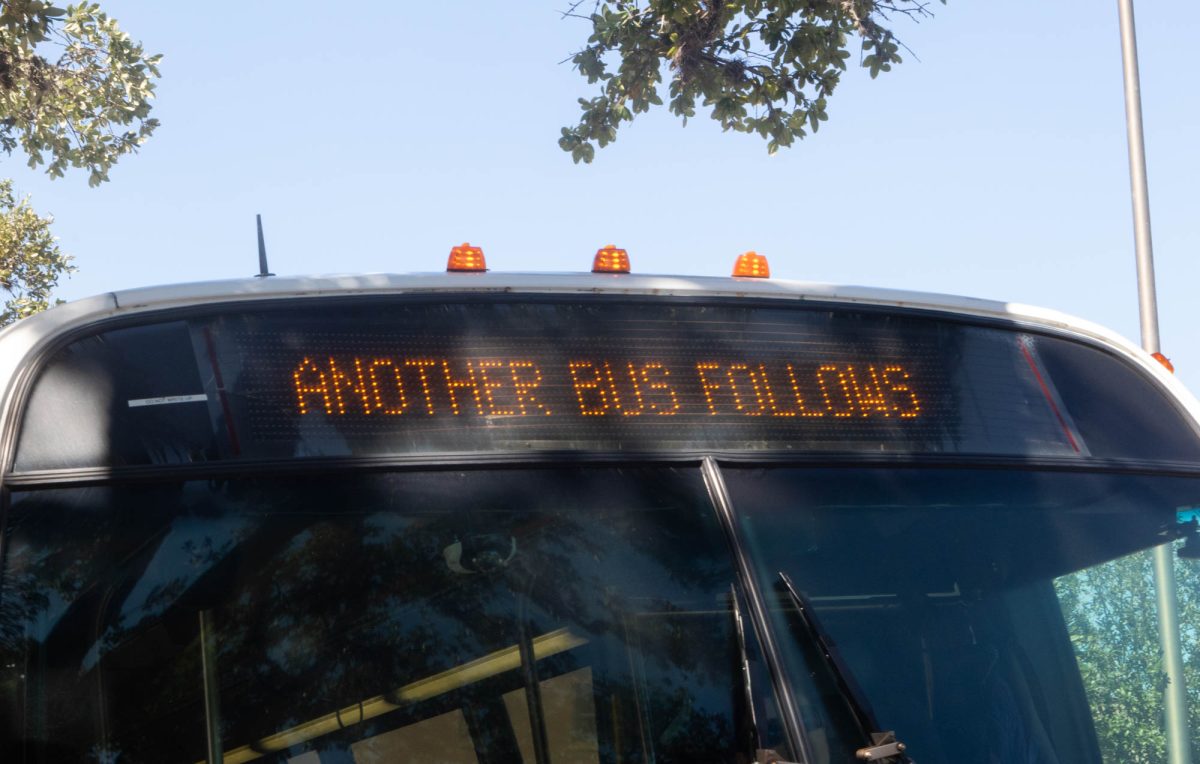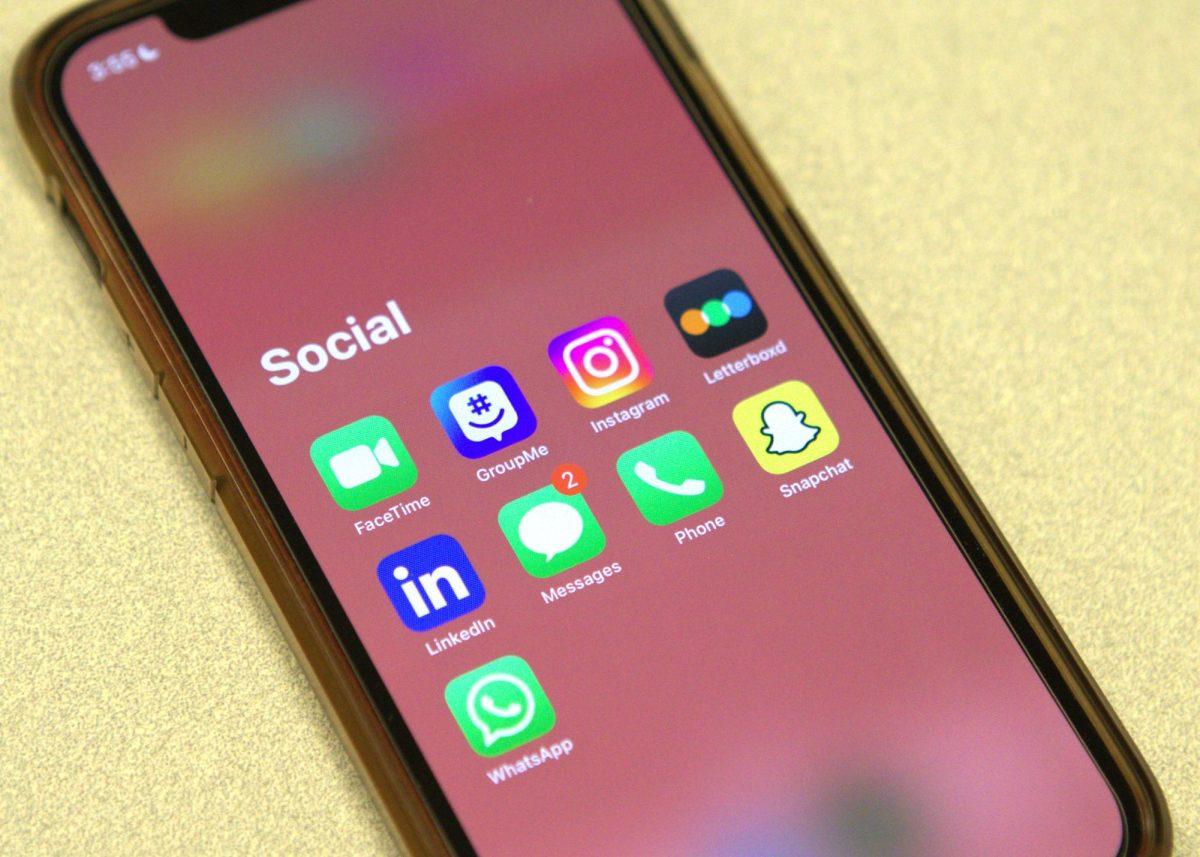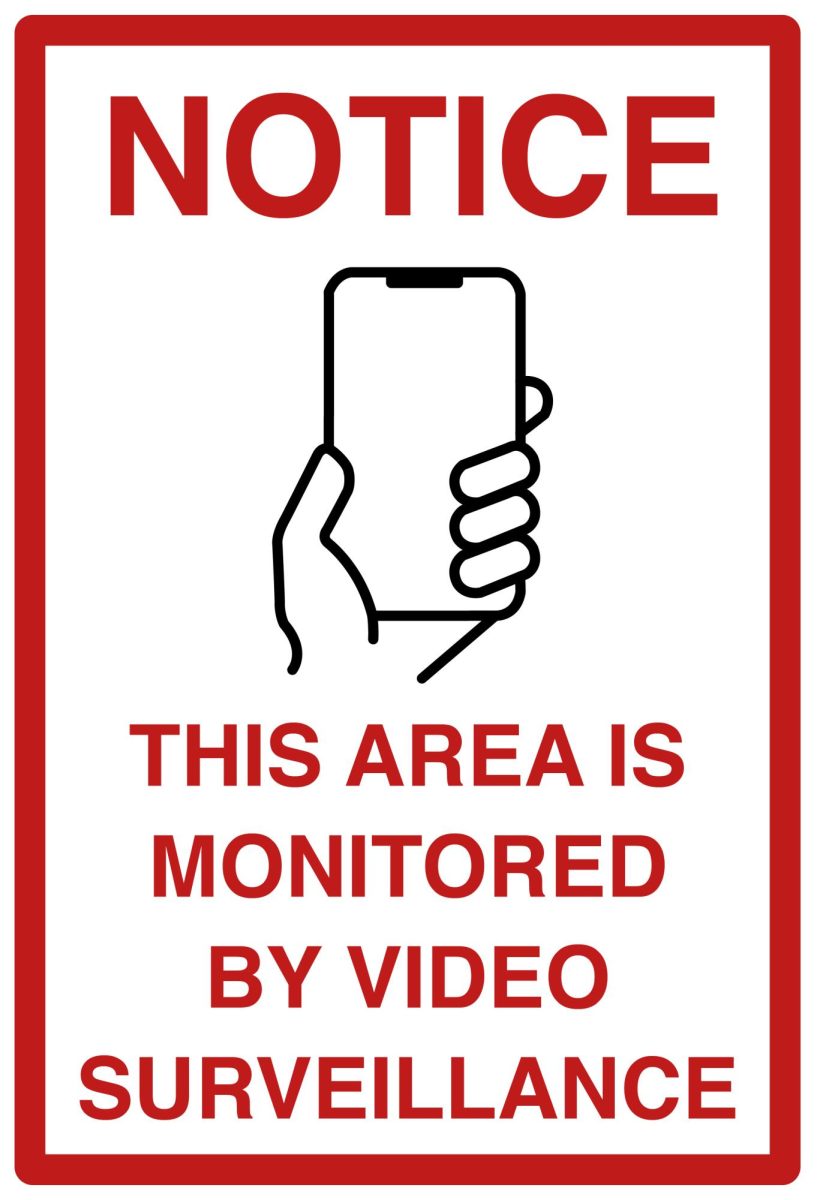Picture this: you just moved off campus and into your first apartment, and you’ve managed to find a convenient new bus route that you plan to take for the rest of the semester.
“I’ll save money on gas and parking!” you tell yourself as you download Maroon Rides — which, by the way, if you haven’t downloaded it, you definitely should. It’s much better than the official bus route interface.
Forget about fighting to the death with other drivers in Lot 100; you’re going to be commuting to school in a half-a-million-dollar vehicle with a chauffeur. It’s safe to say that not getting a parking pass was the right choice. All of those losers can sit in traffic and enjoy the 20-minute walk to their first classes; you’ll be driven to your stop and walk five minutes to the Academic Building.
Then the first day of class comes. You get ready for the day, walk out to your bus stop, and it’s 45 minutes before class. Obviously, you’re going to make it, right?
Not so fast.
Your soon-to-be bus rounds the corner and you see the dreaded phrase flashing on the front display: “Another bus follows.”
Forget about class, because you’re not getting on that bus. And what about the one following it? You have no idea where it is, but it’s probably at least 20 minutes away.
Why am I talking about this? Because I live on Reveille, otherwise known as Bus Route 12. Initially, I had planned to do exactly what I detailed above. However, maybe like you — and many other students at A&M — I have experienced untimely and unreliable bus service throughout my time at the university.
It’s frustrating, but it doesn’t have to be this way.
The fundamental issue with A&M’s bus service is that the buses are simply too infrequent. Even in ideal conditions, 30-minute to one-hour bus service is often not sufficient for the sometimes bizarre start times of classes, student organization events and other on-campus activities.
In several cities whose populations rely on public transportation, transit service runs on a five- to 15-minute schedule. Obviously, College Station isn’t New York City or Chicago, but we can do better. Many students rely on buses just as much as they do cars.
Should we accept subpar service on the A&M bus system just because it’s a form of “public” transportation? Does the lack of social acceptance of bus riding provide a sufficient basis for buses to be mediocre just because we might instead choose to drive cars if we had more money?
It seems self-evident that most people would agree that the bus service shouldn’t be mediocre, all else being equal. Instead, the primary objection to increasing the number of bus routes or the number of buses themselves is financial in nature.
According to A&M’s own transit facts and figures, the bus fleet is at “maximum capacity” with 96 total buses. Each bus costs $68.03 per hour to operate, and it would cost $500,000 on average to purchase a new bus. This is an addition to the roughly $90,000–$180,000 of yearly operating costs that would be associated with each new bus.
How do we solve this problem? We should implement paid bus passes that allow owners to ride on exclusive buses, while not prohibiting anyone that already uses the buses for free from doing so.
This solution would have two beneficial effects, irrespective of the price of the pass — which would hopefully be low — or the obvious benefit of the additional buses themselves. First, the non-paid buses would be far less likely to be full due to the increased distribution of the riders among both the paid and non-paid buses. Those who wished to ride on the paid buses would do so, decongesting the non-paid buses and making all rides better.
Second, a bus pass system could allow A&M’s transit system to use real consumer inputs to determine how to best operate bus lines. Currently, A&M uses “requests for service” and “student population density” to determine where to run buses. However, a better means of testing if consumers desire a service is to see whether or not they demonstrate a revealed preference for that service. Anyone can say they would like a bus route to be run near them, but it’s a different thing to be willing to pay for it.
Ultimately, most students want choice more than anything when it comes to modes of transportation. Although the idea of paying for bus service might scare people, it’s also one of the only realistic ways to get more buses on the road and to give students more options for travel.
Also, I know that when I can’t drag myself out of bed until my alarm has been going off for 20 minutes, I would gladly pay for a bus that runs just a little bit closer to class. Even if I only slept for four and a half hours last night, I don’t want to go into class looking like it. Can you really blame me for that?
Kaleb Blizzard is a philosophy sophomore and opinion writer for The Battalion.











Charles Schlichenmeyer • Oct 6, 2024 at 5:07 pm
The main thing keeping A&M from adding more buses on route is that we simply do not have enough of them, or enough drivers to drive them at peak hours (since we have to go to class too). A paid bus pass system would only perpetuate this even more, and institute a class system among the students. What we have now isn’t ideal, but it is far better than what you just proposed.
Vienna Cheng • Oct 4, 2024 at 3:27 pm
The buses already run on a 5-15 min schedule. If the bus is running Another Bus Follows, that can mean two things. One, that the bus is extremely behind and it’s going faster by avoiding pickups to keep up with the predetermined schedule. Two, the bus is already full and cannot stop to pick anyone else up.
The first day of school will always be crowded and traffic will always be bad. That is not the fault of the buses. It is a well known fact that our university is being pushed to its fullest capacity.
We pay the university more than enough for them to expand our fleet without needing broke students to cover the costs themselves.
You are not arguing for better public transportation. You are arguing for a personal limo service that can walk through traffic. Pay for your own Uber if that is what you desire, but to propose that our free bus system should start taking payments is absolutely ridiculous and goes against our principles as Aggies.